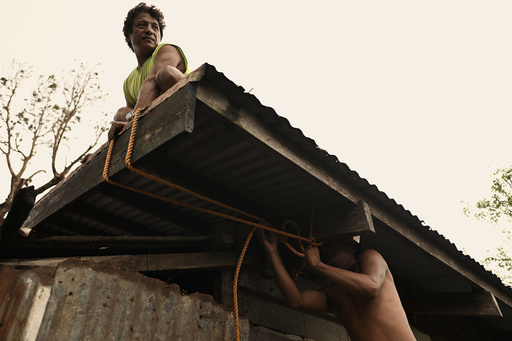
Typhoon Usagi is making its way toward the Philippines, becoming the fifth significant storm to impact the region within a mere three weeks. This situation has triggered widespread evacuations as well as a plea from the United Nations for emergency aid to support the government’s efforts in addressing the challenges faced by affected citizens.
With wind speeds reaching as high as 185 kilometers per hour (115 miles) and gusts hitting 230 kph (143 mph), Usagi is expected to intensify even more before it makes landfall in Cagayan province on Thursday afternoon. This area, located at the northern tip of Luzon, holds the title of the country’s most populated agricultural zone.
Forecasters have warned of yet another storm brewing in the Pacific, which could potentially affect northern regions of the Philippines over the upcoming weekend.
The nation’s meteorological agency has issued warnings regarding life-threatening tidal surges that could reach three meters (nearly 10 feet) in Cagayan and seven adjacent provinces. Mariners have been instructed to either stay in port or seek immediate shelter.
Just two days prior, Typhoon Toraji had finished its course through northern Philippines, causing significant floods, disrupting power lines, and necessitating the evacuation of over 42,000 residents.
The Philippine government is grappling with the aftermath of the previous four storms, which have resulted in at least 160 fatalities, displaced millions, and caused extensive damage to agricultural lands and infrastructure, particularly in northern Luzon.
In response, the administration of President Ferdinand Marcos Jr. has allocated over 1 billion pesos (approximately $17 million) towards food and other forms of assistance for hundreds of thousands of storm-affected individuals, as reported by Welfare Assistant Secretary Irene Dumlao.
Defense Secretary Gilberto Teodoro, responsible for coordinating disaster responses, reached out to nearby countries such as Singapore, Indonesia, Malaysia, and Brunei for additional air support to deliver food, water, and other relief supplies to communities cut-off by the ongoing storms. The United States, long-time ally of the Philippines, has also deployed cargo aircraft stocked with food and assistance.
The U.N. Humanitarian Country Team in the Philippines is in the process of raising $32.9 million to help the government support approximately 210,000 individuals in urgent need of help and protection over the next three months, particularly focusing on women, children, and individuals with disabilities.
In its emergency plan, the U.N. team pointed out the extraordinary challenges the Philippines is facing this tropical cyclone season, marked by an unprecedented frequency and intensity of storms affecting various locations in the archipelago. Local authorities are reportedly stretched thin as they balance the simultaneous tasks of managing the crisis and coordinating rescue operations for families in distress.
The Philippines typically encounters about 20 typhoons and tropical storms each year, in addition to being susceptible to earthquakes and housing numerous active volcanoes, positioning it as one of the most disaster-prone nations globally.
The catastrophic impact of Typhoon Haiyan in 2013 serves as a stern reminder, as it was one of the strongest tropical cyclones ever recorded, leading to over 7,300 lives lost or unaccounted for, obliterating entire communities, and causing significant maritime incidents in the central Philippines.
